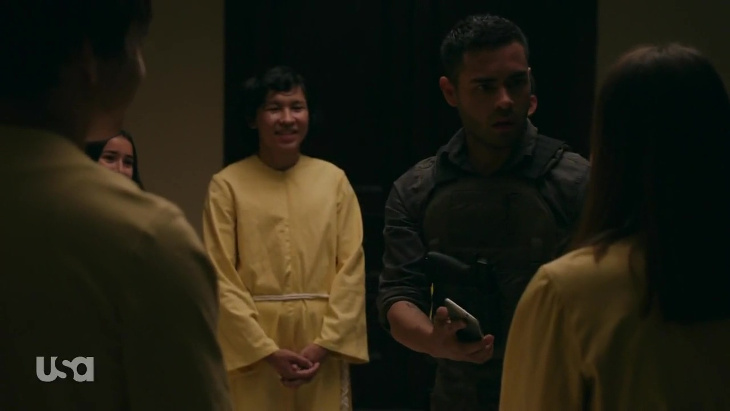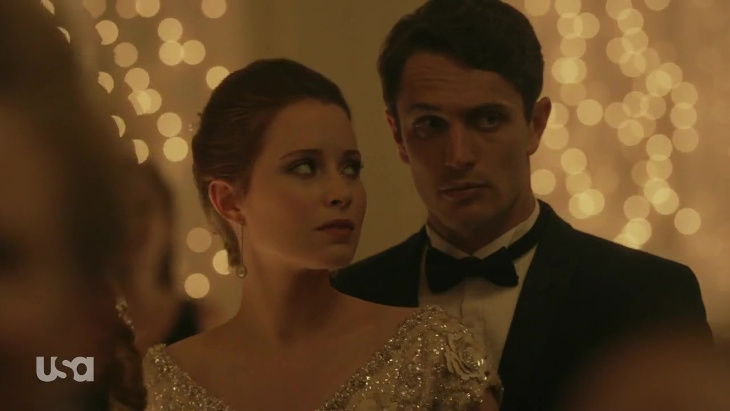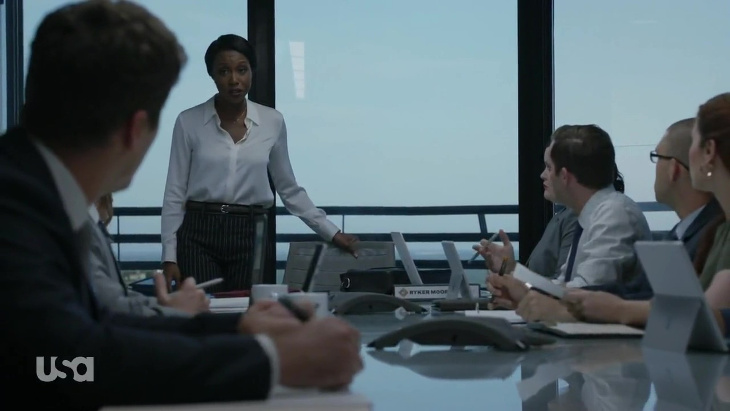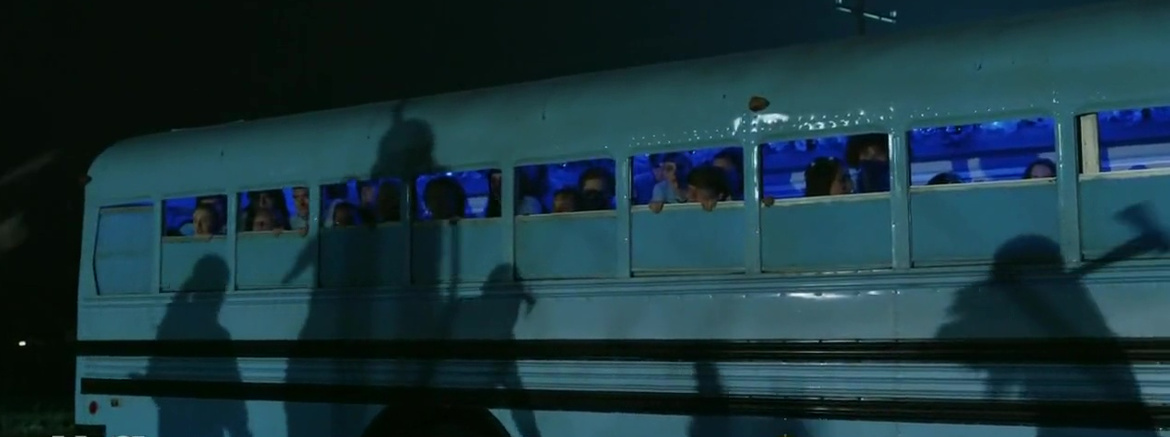
“Our support of the NFFA allows them to implement programs and policies we believe in… including the Purge, the great liquidator of our time!”
My exposure to the Purge franchise could be described as limited at best. I’ve seen a few reviews and discussions of the individual films, but never actually watched any of them. My opinion of the franchise, ill informed though it may be, was that it was essentially the thriller version of the Fast & Furious films: pretty stupid but reveling in its stupidity in a manner which its fans find rewarding. However, over the past few weeks, I’ve bounced around wildly on whether I thought a Purge TV show was a good idea. It doesn’t change the fact that the core concept is pretty difficult to swallow, but it does allow for a deeper dive into what such a scenario would entail for a variety of characters as they are forced into a series of circumstances that leave them exposed to the chaos of the Purge. What intrigued me, though, wasn’t the aspects of the premise that could potentially be used to tell a compelling narrative, but the venue it had found. Several years ago, I rambled about the surprise brilliance of the new USA hit drama Mr. Robot, as it had completely defied all my expectations and flew in the face of what the network’s name often entailed. This was part of an attempt to rebrand the network, but they hadn’t succeeded in catching my attention since (I’ve heard good things about The Sinner, but failed to realize where it was airing). Had The Purge ended up on a network like Showtime or Cinemax, I probably wouldn’t have given it a second thought until it was time to prepare my review. Fortunately, despite my misgivings about the franchise, The Purge (sorta) works.

The first episode follows 3 separate narrative threads. The first follows a marine as he searches for his sister who has joined a cult tied to the Purge. The second follows a businesswoman who is required to work on a business deal during the Purge, but has plans of her own. The last follows a couple who hope to make a business arrangement with a member of the New Founding Fathers at a party he is hosting on Purge Night. Each story builds an effective amount of tension, though the one featuring Amanda Warren, the businesswoman, is probably the weakest as it features the least development and uses some cheaper tactics when setting up its scenario. I doubt your average office building is going to have a convenient metal grinder in its maintenance area for sharpening your machete. The first episode, What is America?, uses a gradual progression that feels mildly reminiscent of 24 as a timestamp is often shown to establish the amount of time left before the start of the Purge. There is a missed opportunity here, as it would have been effective for the episode to end on a “12 Hours Left Until the Purge Ends” title card. I could have also used a quick sparknotes version of the premise, as I found myself wondering if this was the future, an alternate timeline, or just what happens in Detroit every so often. It’s awkward to complain about a failure to explain the world when it’s from an already existing property, but this can’t be solely targeted towards fans of the films. Plus, even Star Wars Rebels took the time to give a cliffnotes explanation of the Force.

The casting and production is largely fine. The premise doesn’t call for spectacular production values, but I still had occasional issues with line delivery or visuals. The marine, Miguel, wears night vision goggles when driving at night, but the goggles give people an orange tint while everything else is blue. This is presumably for the purpose of making them pop out against the background, but it cheapens the effect. The cult that his sister has joined is also a pretty iffy concept. I’m not going to spoil its inner workings, but most viewers will probably guess what is going on early in the episode. The casting of Fiona Dourif as the cult leader seems like a potentially inspired choice, but she doesn’t have much to do in the first episode. Frankly, every scene with the cult could be described as “like a scene from The Handmaid’s Tale, but less interesting.” Ultimately, I feel the key factor holding the show back is still the concept of the Purge itself, and the limited originality with which it is approached. As the episode rolls towards its end, it tries to push extreme smiles and “The Greater Good,” style fanaticism past the breaking point. It was definitely a more interesting entrypoint than I would have initially expected, but if someone was expecting this to be the surprise hit of the season, then they need to significantly lower their expectations.
Before I wrap up, a few Notes and Nitpicks:
- William Baldwin shows up in a video call as Amanda Warren’s boss. Aside from coming across as needlessly intimidating, he doesn’t offer much to the proceedings.
- The couple at the party mainly offers a view of how the rich and powerful enjoy the Purge. It’s lacking in nuance, but not terrible, though the speech given by Daniel Whitehall’s wife comes across as too cheesy. She even refers to making America “great.”
- The opening credits are thoroughly forgettable. It wouldn’t be an unreasonable expectation to think the show would lean on the same distinctive ‘patriotic’ imagery of the films, but instead it’s just… nothing. There’s green and red images and loud announcement horns.
- I only have one episode to go off of, but I’m finding the buildup to the Purge to be far more fascinating than the actual event.
- The show is described as a horror series, but it seems to sit firmly in the thriller category.




Add comment